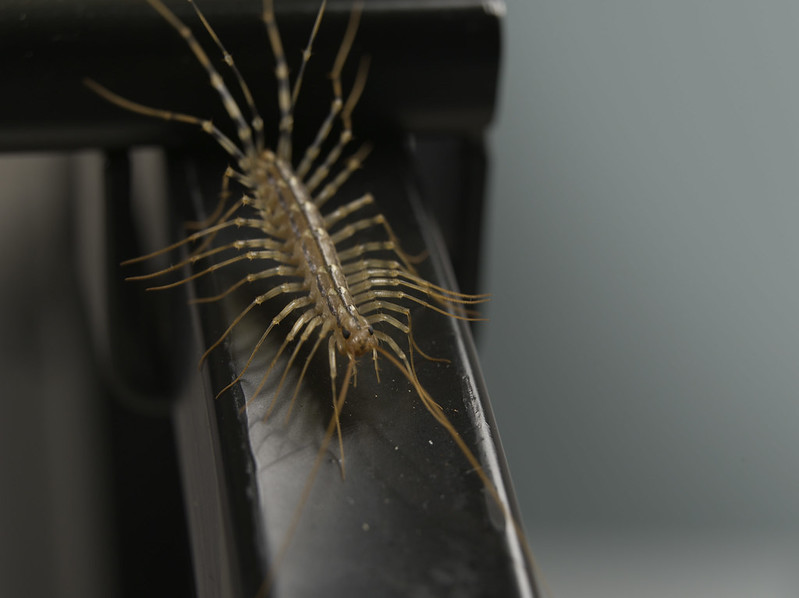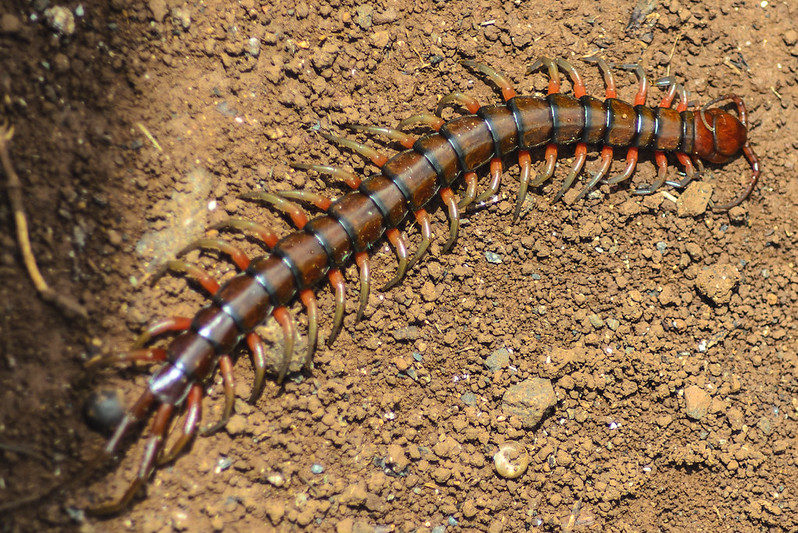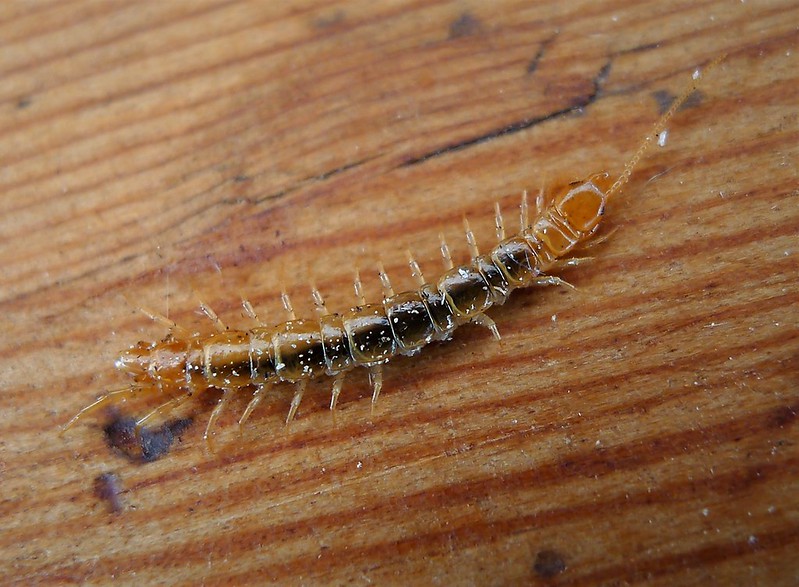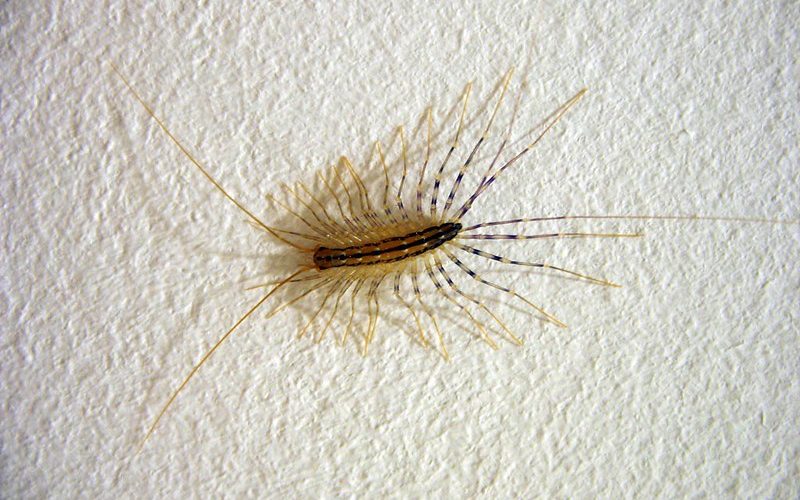Centipedes — predatory arthropods with an impressive number of legs and rather long, segmented, bodies — are one of the scariest looking pests around. Perhaps more than any other bug, they seem to epitomize the Biblical description of “whatsoever hath more feet among all creeping things that creep upon the earth”.
Though there are more than 3,000 species of centipedes, the most common in our homes is the Scutigera coleoptrata, also known as the “house centipede”.
Whether you see them crawling in your garden or scurrying around your basement, your first question is likely to be, “are these things dangerous?”
Do Centipedes Bite?
You bet. House centipedes have impressive mandibles that are visible to the naked eye. Using these, they devour their prey, which may range from silverfish to cockroaches and bed bugs. Humans are not on their menu, however, and house centipedes will not, technically speaking, ever bite you.
Do Centipedes Sting?
Yes, they can. Using the pair of legs on their first body segment, house centipedes deliver a venom to render their prey, well, let’s say “more compliant”, before they eat them. Several larger centipede species, specifically tropical centipedes, are known to occasionally sting humans.
House centipedes will, like other centipedes, generally avoid people — living in humid, dark, spaces close to the ground, their paths don’t cross with ours all that often, and they are definitely not interested in eating humans.
There is a caveat, however. When you come across a centipede, it will typically scurry away, fearing you more than you fear it. However, if you leave a house centipede no way to escape and it feels threatened, it may deliver a sting.
The venom it carries is too weak to affect most people. If you are not sure whether you were stung by a house centipede or a larger tropical centipede, however, it is still best to call poison control. That is especially true if you notice symptoms like localized swelling, difficulty breathing, dizziness, hives, or a fever. These may indicate that the site has become infected, or that you are experiencing a serious allergic reaction.
Are Centipedes Dangerous to Pets?
House centipedes do not pose a danger to most cats and dogs. Just as they run away from people, these smaller centipedes will attempt to find refuge from your pets, too.
If your cat or dog is stung by a house centipede, it will not usually be a serious health threat. Larger tropical centipedes may, however, affect cats and dogs in the same way as people — but more strongly, given these pets’ smaller bodies. Should this happen, it is best to seek veterinary assistance.
Are Centipedes Bad for Your Garden?
Centipedes are predatory bugs, meaning they eat insects and arachnids. Many of centipedes’ food sources threaten the health of your plants, flowers, and seedlings. As such, centipedes may actively be helpful in your garden.
It is, however, important to note that not all long bugs with numerous legs are centipedes.
Millipedes are also arthropods with numerous legs. Unlike centipedes, millipedes thrive on a diet of decaying and vulnerable plant matter. They have more segments, more but thinner legs, and rounder bodies compared to centipedes. Some millipedes target seedlings, making them a danger in the garden.
Do Centipedes Pose a Danger in the Home?
Found within your home, house centipedes do not pose a danger to your health or your property.
They only eat harmful pest bugs that you’d be glad to be rid of, and don’t threaten the structural integrity of your home. Because centipedes are attracted to moisture and high humidity, their presence can, on the other hand, indicate that your home either has a localized moisture problem or an issue with high humidity levels. Both of these could be a risk to your property as well as your health.
Spotting centipedes in your home may, therefore, indicate that you need to call in repair professionals to deal with leaks or install a dehumidifier to tackle systemic excess humidity.
Citations and Credits



